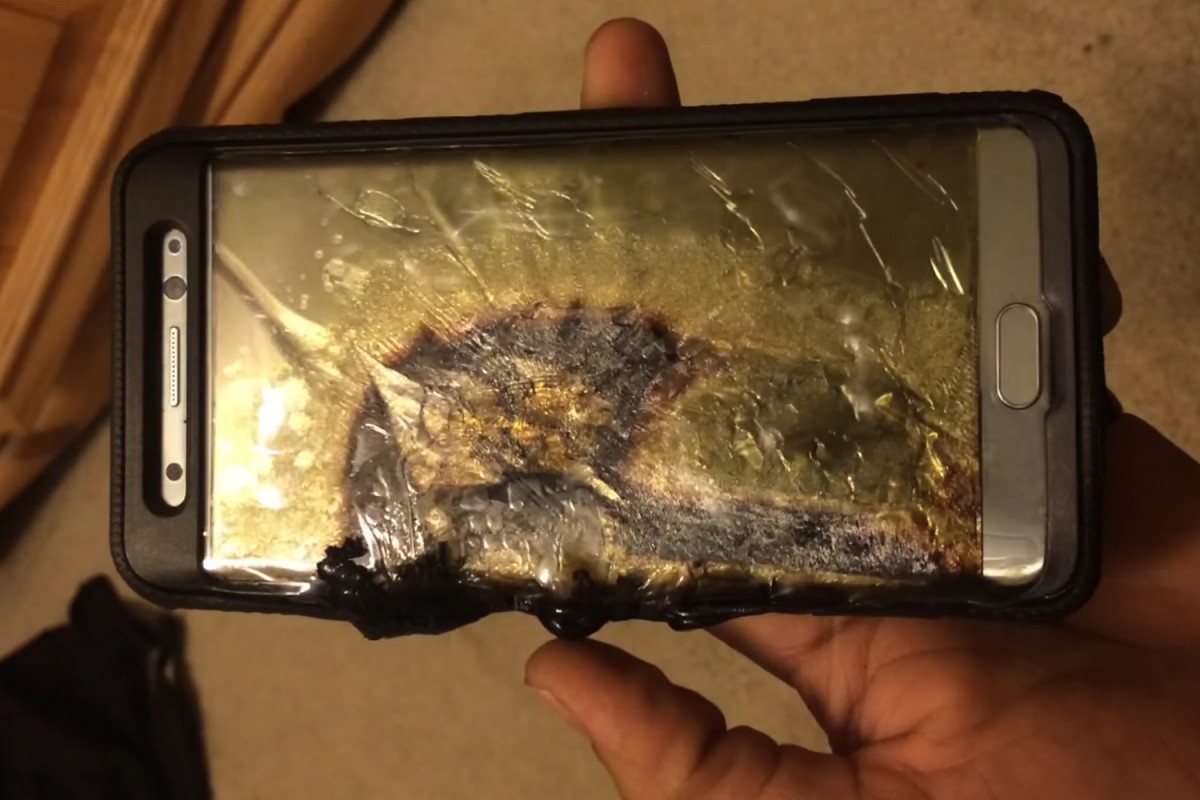
Samsung has officially recalled its new Galaxy Note 7 smartphone after reports that it can overheat and even explode. The company said it had “conducted a thorough investigation and found a battery cell issue.”
According to Samsung, there have been 35 reported cases and 2.5 million phones have been produced. While that figure is relatively high (batteries typically fail at a rate of 1 in tens of millions) it’s still far from common.
“Battery failures are exceedingly rare,” says Donal Finegan, a chemical engineer at University College London. “Even though they are exceptionally rare, any kind of fault does garner a lot of media attention and can really affect the reputation of a product that relies on the battery.”
Like many rechargeable devices, phones use lithium-ion cells. But what makes these batteries great at powering gadgets also makes them vulnerable to catching fire, says Finegan, who studies why batteries fail. “They are so energy-dense — they contain so much power and electricity — they do combust in a particularly catastrophic way.”
Heat sources
Overheating is obviously driven by temperature rise. This can be due to the environment, such as a hot car in summer, or through heat transferred to a battery from another component inside the phone. Heating can also begin within a battery itself, which is behind the “battery cell issue” in Samsung’s Note 7.

Samsung Galaxy Note 7 (Image: Samsung)
One cause of combustion is a problem with the “battery management system” that monitors the electrical current and normally tells a chip inside the phone to stop the current once a battery is fully charged. If the system or chip are faulty, a battery can enter a state of “overcharge”.
“The battery can continue to charge and can become even more unstable and eventually just burst into flames itself, without any kind of external heating,” Finegan explains.
Phones don’t contain fans or the liquid cooling mechanism you’ll find in a gaming PC or electric vehicle, so heat must radiate out into the surroundings. And if that doesn’t happen, heat is generated faster than it can be dissipated or lost. When a battery reaches about 100ºC, its materials start to break down, triggering a chemical chain reaction that releases its own energy. This accelerates the warming and leads to a snowball effect — a process called “thermal runaway”.
“The snowball effect happens so fast that, within a second, the entire cell goes from being intact to being completely destroyed,” says Finegan.
So what triggers the catastrophic failure that prompts a battery to explode?
END

Be the first to comment